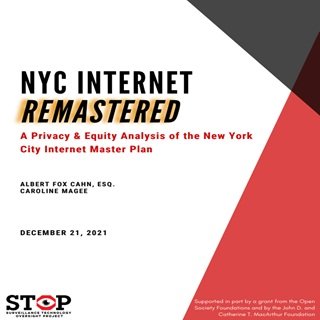By Albert Fox Cahn, ESQ. Caroline Magee
On January 7, 2020, New York City released its Internet Master Plan. The document identified how many New Yorkers lacked access to broadband and what the City intended to do about it. The numbers were staggering: 46% of New York households in poverty lack a home broadband subscription.[1]
But what had been a problem evolved into a crisis when the COVID-19 pandemic descended on New York City in March. For the first time, New Yorkers had to stay home: as New York’s 1.1 million public school students logged into Zoom for the first time, and their parents tried to take phone meetings in the same rooms, it became clear that the internet, once a luxury, was now a necessity.
As the fall semester loomed, the de Blasio administration tried to close the gap in July 2020, investing $157 million for providing low-or-no-cost internet to 600,000 New Yorkers, one-third of whom live in New York City Housing Authority housing.[2] The City is scrambling. In this light, a plan to expand internet access for residents of New York City is much needed and reflects the modern reality of reliable, affordable internet access as a barrier for reaching public services and economic opportunities. What is missing from the City’s Internet Master Plan, however, is a needed degree of specificity on the privacy and cybersecurity protections built into this planned internet expansion.





